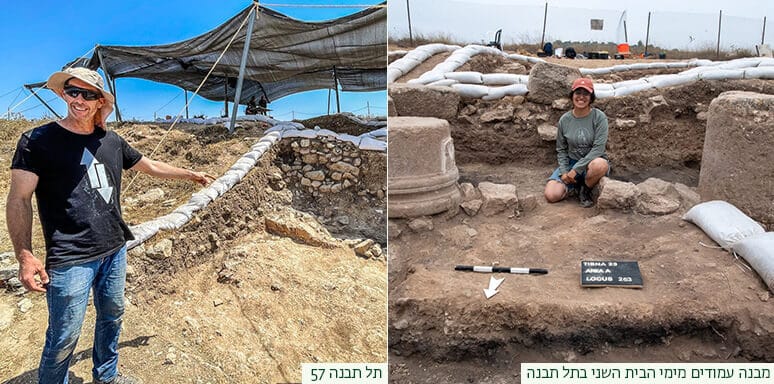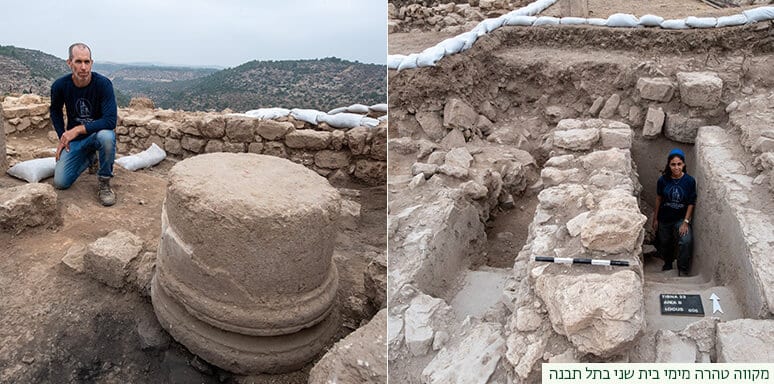In the archaeological excavation project that took place, for the second year in Tel Tabna, findings were discovered that indicate, among other things, the use of the area as an administrative regional center in the Roman period.

A team of researchers alongside male and female studentsDepartment of Land of Israel Studies and Archaeology, participated during the month of August 23, in the excavation project, in Tel Tabna in West Binyamin. The project, which is ongoing for the second year, yielded interesting findings that testify to the life that was conducted in this area during the Second Temple period. Dr. Dvir Raviv, who headed the project, says that the findings yielded by last year's excavations encouraged the researchers to hold another season of excavations this year as well "in order to answer specific research questions."

According to him, most of the finds from the excavation date from the end of the Second Temple period to the Bar Kochba revolt. "During this period of time, one of the capitals of the district of Yehuda resided there, which weakened dozens of rural settlement sites. The results of the excavation suggest that the top of the mound was destroyed, at least in part, during the Bar-Kochba rebellion (132-136 CE). Some objects we found may even indicate a Roman military presence, apparently short-term, in the Tel, in the years after the days of the rebellion," says Dr. Raviv, "The excavation findings include many pottery vessels, candles of various types, glass and metal stone vessels, hundreds of coins, Animal bones and more."
One of the fascinating discoveries uncovered during this excavation season is a pillar base decorated in the "Atti" style. This item, which was found in a secondary use in a structure from the end of the Second Temple period, was dismantled from a magnificent structure that stood at the top of the mound, probably during the Herodian period. Other interesting finds that were discovered are a complete bowl from the Iron Age 2, which is added to the objects from this period that were found at the end of the previous season and apparently represent a layer of destruction from the days of the Assyrian occupation, as well as three large bronze coins of the value of a sestertius that were minted in Caesarea during the days of Emperor Trinus.
Michal Baram, a master's student in the department, explains the significance of the find: "Coins help us date buildings and facilities at the site and provide us with valuable information about the history of the site and its inhabitants. Some of the coins found in Tel Tabna belong to the group of 'city coins' that were minted in the cities of Caesarea, Jerusalem and Tzipori. At the time, the circulation of currency was an excellent way to transmit information across large areas in a world lacking mass media. Symbols, inscriptions and models were stamped on the coins in order to publicize political ideas, social events and religious, military and economic messages. From these symbols and inscriptions we can reconstruct the history of the city and learn about its inhabitants, their religion and their economy at a time when we do not have much historical documentation of those cities."
According to Dr. Raviv "the analysis of these findings will shed light on the history of the site and the region in various periods and especially on the Roman period during which the site served as a regional administrative center".
More of the topic in Hayadan:
- starting from the beginning
- A rare half shekel silver coin from the days of the Great Revolt was discovered in the Ofel excavations in Jerusalem
- Less "round" coins, but much less coins
- Has the 'Commissioner's Palace' from the First Temple period been revealed?
- An unusual pottery testifies to an ancient agricultural cult in the Jordan Valley
